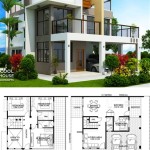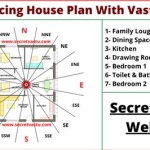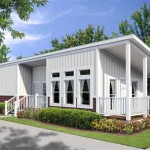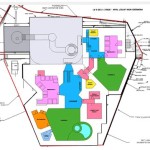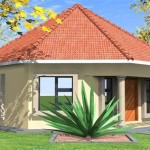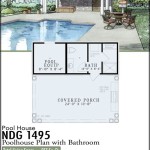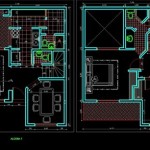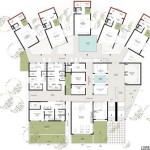Senior House Plans: Considerations for Aging in Place and Beyond
As individuals age, their housing needs evolve. Senior house plans address these changing requirements, prioritizing accessibility, safety, and comfort. These plans cater to a diverse range of needs, from minor modifications for aging in place in a current residence to specialized designs for assisted living facilities. Understanding the core elements of senior-friendly design is crucial for both homeowners anticipating future needs and for families seeking suitable housing options for aging loved ones.
One primary focus of senior house plans is single-story living. Eliminating stairs significantly reduces the risk of falls, a major concern for older adults. Ranch-style homes and single-story variations of other architectural styles are popular choices. For multi-story dwellings, incorporating an elevator or lift can offer a safe and convenient alternative to stairs.
Accessibility extends beyond stair elimination. Wider doorways and hallways are essential for accommodating wheelchairs and other mobility aids. Turning radii within rooms should be ample to allow easy maneuverability. Lever-style door handles and faucet controls are easier to operate for individuals with arthritis or limited hand strength. Lowered countertops and adjustable shelving in kitchens and bathrooms promote independence and ease of use.
Safety features are paramount in senior-friendly design. Grab bars strategically placed in bathrooms and hallways provide support and prevent falls. Non-slip flooring throughout the house minimizes the risk of slips and trips. Enhanced lighting, including nightlights in hallways and bathrooms, improves visibility and reduces the likelihood of accidents in low-light conditions. Security systems with emergency call buttons offer peace of mind for both residents and their families.
Comfort and convenience are also key considerations. Open floor plans create a sense of spaciousness and facilitate easy movement between living areas. This design also promotes social interaction and allows caregivers to easily monitor residents. Dedicated laundry rooms on the main floor eliminate the need to carry heavy laundry baskets up and down stairs. Ample storage space is essential for accommodating assistive devices, medical supplies, and personal belongings.
The exterior of the home should also be designed with senior needs in mind. Gentle slopes and ramps leading to entrances eliminate steps and improve accessibility. Covered porches and patios provide sheltered outdoor spaces for relaxation and enjoyment. Low-maintenance landscaping reduces the physical demands of yard work. Well-lit pathways and driveways enhance safety and security.
Beyond individual residences, senior house plans also encompass assisted living facilities and other communal settings. These plans incorporate common areas for socializing and dining, along with specialized spaces for medical care and recreational activities. Considerations for privacy, individual needs, and staff accessibility are paramount in these designs. The layout should facilitate efficient workflows for staff while maintaining a comfortable and home-like atmosphere for residents.
Universal design principles are often incorporated into senior house plans. Universal design aims to create environments that are usable by people of all ages and abilities. This approach not only benefits seniors but also individuals with disabilities and families with young children. Features like wider doorways, lever handles, and zero-threshold showers enhance accessibility for everyone.
The choice of materials and finishes also plays a crucial role in senior-friendly design. Durable, easy-to-clean surfaces are essential for maintaining hygiene and minimizing maintenance. Non-toxic and hypoallergenic materials contribute to a healthy indoor environment. Consideration should also be given to the aesthetic appeal of the materials, creating a welcoming and comfortable space.
Technology integration is increasingly important in senior house plans. Smart home features can enhance safety, security, and convenience. Automated lighting systems, voice-activated assistants, and remote monitoring systems can provide support and independence for seniors. These technologies can also facilitate communication with family members and caregivers.
When considering senior house plans, it is essential to consult with professionals who specialize in accessible design. Architects, contractors, and occupational therapists can provide valuable insights and guidance. They can assess individual needs, recommend appropriate modifications, and ensure compliance with accessibility guidelines. Careful planning and collaboration with experts can result in a home that is safe, comfortable, and supportive, promoting independence and well-being for seniors.
Flexibility and adaptability are key features of successful senior house plans. As needs change over time, the home should be easily adaptable to accommodate these evolving requirements. This may involve adding grab bars, widening doorways, or installing a stair lift. Designing for future modifications can help seniors remain in their homes comfortably and safely for as long as possible.
The financial implications of senior housing should also be considered. Retrofitting an existing home for accessibility can be a significant investment. The cost of building a new senior-friendly home will vary depending on the size, features, and location. Exploring available financial resources and incentives for senior housing can help individuals and families make informed decisions.

Small One Story 2 Bedroom Retirement House Plans Houseplans Blog Com

Senior Housing Building Plans How To Plan Floor Assisted Living

Aging In Place House Plans Plus

Aging In Place House Plans Plus

Small One Story 2 Bedroom Retirement House Plans Houseplans Blog Com

How The Best Nursing Home Designs Focus On Senior Health And Wellness Part 1 General Areas

Age In Place Home Designs

Starter Or Retirement Home Plan 83098dc Architectural Designs House Plans

Pin On Arch Plans

What Are The Types Of Senior Living Floor Plans In Florida Aston Gardens

